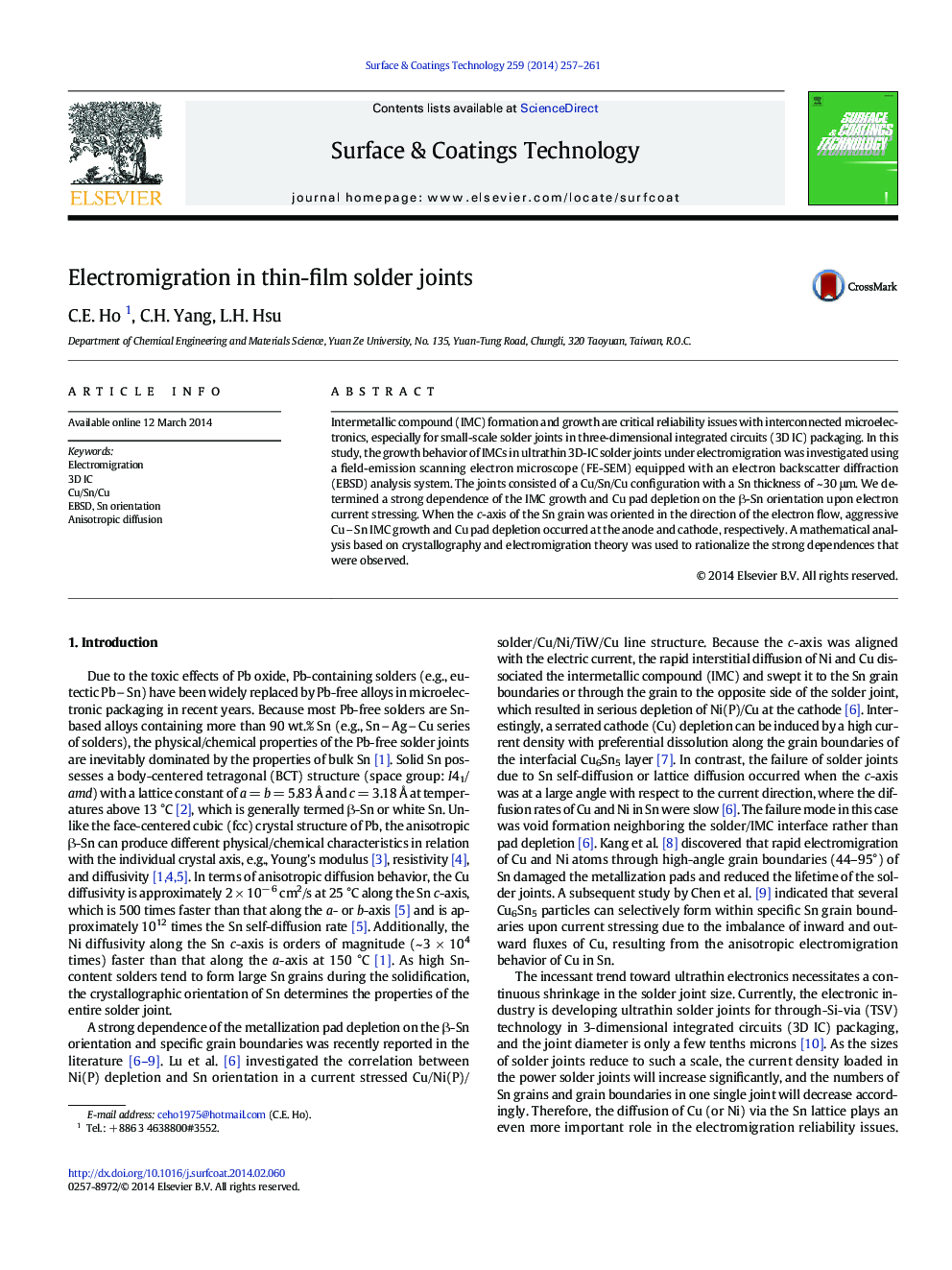| Article ID | Journal | Published Year | Pages | File Type |
|---|---|---|---|---|
| 1657362 | Surface and Coatings Technology | 2014 | 5 Pages |
Abstract
Intermetallic compound (IMC) formation and growth are critical reliability issues with interconnected microelectronics, especially for small-scale solder joints in three-dimensional integrated circuits (3D IC) packaging. In this study, the growth behavior of IMCs in ultrathin 3D-IC solder joints under electromigration was investigated using a field-emission scanning electron microscope (FE-SEM) equipped with an electron backscatter diffraction (EBSD) analysis system. The joints consisted of a Cu/Sn/Cu configuration with a Sn thickness of ~ 30 μm. We determined a strong dependence of the IMC growth and Cu pad depletion on the β-Sn orientation upon electron current stressing. When the c-axis of the Sn grain was oriented in the direction of the electron flow, aggressive CuSn IMC growth and Cu pad depletion occurred at the anode and cathode, respectively. A mathematical analysis based on crystallography and electromigration theory was used to rationalize the strong dependences that were observed.
Related Topics
Physical Sciences and Engineering
Materials Science
Nanotechnology
Authors
C.E. Ho, C.H. Yang, L.H. Hsu,
